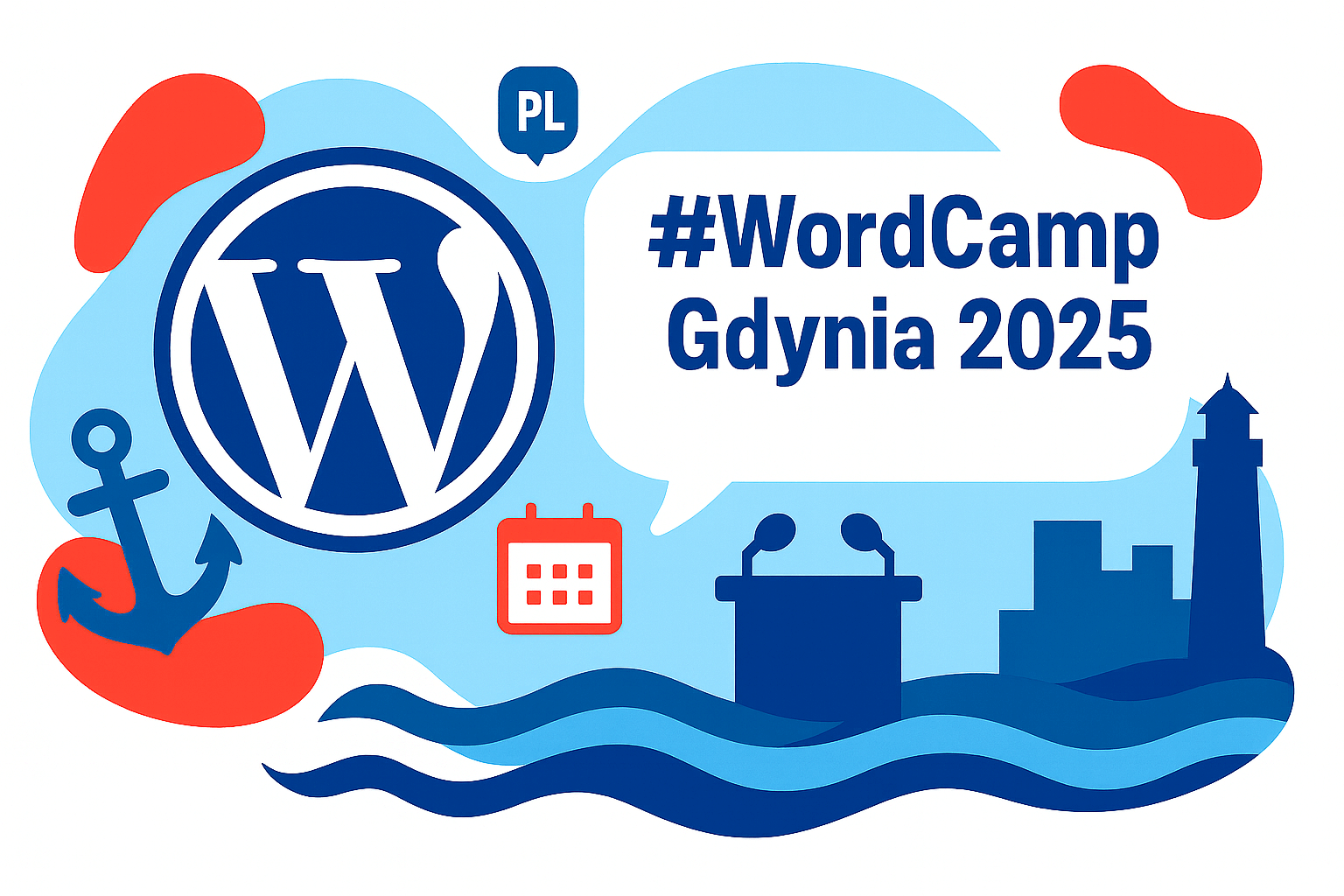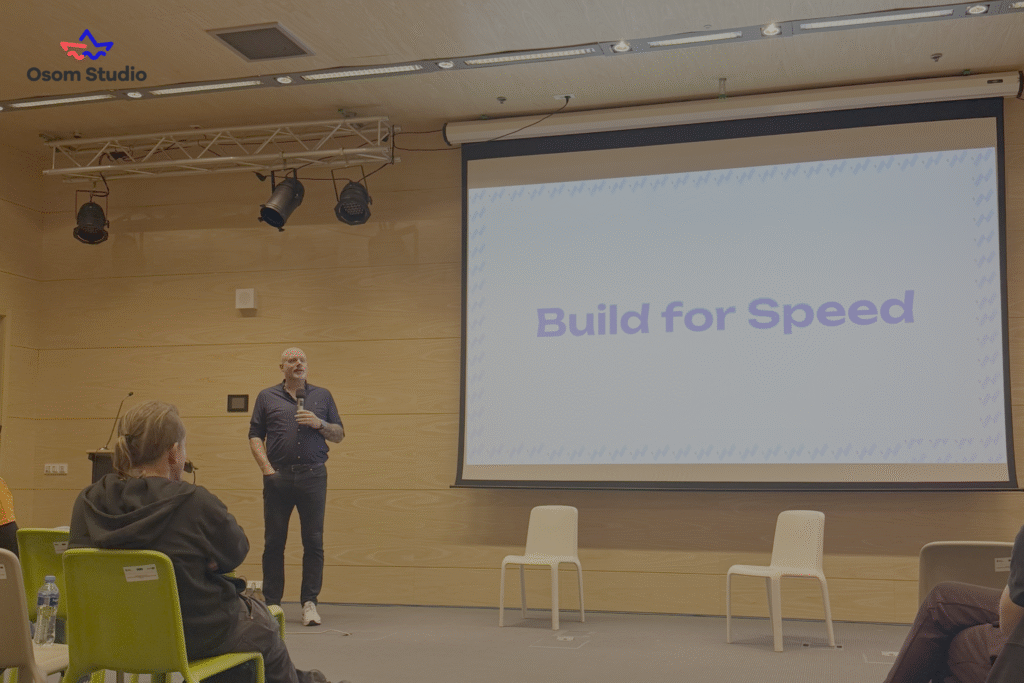
Highlights from WordCamp Gdynia 2025
Whether you’re a freelancer, agency, or core contributor – showing up at WordCamps is always worth it. These events are where ideas sharpen, partnerships form, and trends crystallize. WordPress isn’t just software – it’s a community, and events like WordCamp Gdynia remind us just how alive, ambitious, and collaborative it really is.
For the first time in WordCamp Poland’s history, the entire event was bilingual – and it worked beautifully. Held in Gdynia’s PPNT, the three-day experience (Sept 26–28) combined hallway conversations, high-level panels, and deeply practical sessions – all welcoming both Polish and international WordPress pros.
At Osom Studio, we loved the format. The mix of English and Polish tracks opened the door for fresh perspectives, unexpected insights, and some of the most forward-thinking conversations we’ve heard in a while.
Below are four sessions (and one important regulation update) that stood out – for their relevance, clarity, and long-term impact. Three of them were delivered in Polish, but we’ve summarized the key insights for you here in English. One, by Remkus de Vries, was in English – and we strongly recommend watching the full talk if you can.
AI + WordPress: The Panel That Actually Said Something Useful
“Leads in the Age of AI – WordPress Between Automation and Relationships” discussion panel was a standout – not just because it tackled AI, but because it approached the topic with nuance.
Key takeaways:
-
- Reputation isn’t just a Google thing anymore. Chatbots and AI crawlers (think Perplexity, ChatGPT, etc.) increasingly reference niche forums, reviews, and UGC. One off-hand Reddit comment might find its way into a chatbot summary of your brand.
-
- “Bad vibes” have disproportionate impact. AI tools tend to highlight both pros and cons – but if there’s even one negative mention across multiple sites, it might get amplified in LLM-generated results.
-
- Websites may become invisible to users. As AI interfaces replace direct browsing, your site becomes more of an API endpoint. Structure your content accordingly (taxonomies, schema, clean metadata).
-
- llm.txt is not the magic SEO switch some hoped for. It’s too short and not consistently honored. Focus on content depth and clarity instead.
-
- Marketing isn’t broken – just changing. AI is a tool, not a strategy. The same principles apply: know what you’re selling, to whom, and why.
In a world where chat interfaces may soon become the default way people interact with the web, content strategy is no longer just about ranking – it’s about being referenced, cited, and trusted by machines. What matters now isn’t just visibility, but clarity, consistency, and credibility. For WordPress professionals, this shift represents not a threat, but a new field of opportunity – where smart architecture, strong reputation, and thoughtful publishing make all the difference.
Performance First: Why Caching Alone Won’t Save You
Remkus de Vries’s English-language talk – “Caching Doesn’t Solve Performance Problems” – was packed with gold for developers and agencies alike.
Key takeaways:
-
- TTFB (Time To First Byte) is still one of the cleanest indicators of bloated builds.
-
- Query Monitor is your best friend. Especially when pinpointing plugin bottlenecks.
-
- Don’t over-engineer. If a plugin combo doesn’t play well together, consider switching – not patching.
-
- Smart caching = targeted caching. Choose tools that allow granular control by page or section, not just global defaults.
Performance is often treated as a post-launch problem, but it really starts at the planning stage. From TTFB to plugin conflicts, every decision in your stack either contributes to a faster, leaner experience – or holds it back. Remkus’s talk was a solid reminder that optimization isn’t about chasing shiny tools; it’s about knowing your setup, questioning defaults, and building with intentional simplicity.

SEO + AI = A New Kind of Search Game
A presentation done by Paweł Gontarek: “Anyone can create content – a little SEO, a little AI” was refreshingly practical. It tackled the messy, nuanced space where AI tools and SEO now overlap – and what content creators need to watch.
Highlights included:
-
- AI-generated images rank worse in Google Images. If you’re banking on AI visuals for traffic – think again.
-
- SEO isn’t dead – it’s just evolving. LLMs like ChatGPT don’t replace organic traffic; they expand how your content can show up.
-
- Context is king. LLMs don’t auto-update like Google. Your prompts need to explicitly reference time, relevance, and framing.
-
- Good prompts = good AI content. Ask vague questions, get vague results.
-
- Sponsor content needs substance. Links matter – but high-quality, informative posts have a better shot at being cited by AI
In a search ecosystem increasingly shaped by AI summarization, SEO has become more about influence than indexability. What ranks might not be what gets cited. This means content creators need to understand how prompts, sources, and structure shape how their work is interpreted – not just by users, but by machines. The goal is no longer just visibility in search, but strategic presence in the answers themselves.
The Cyber Resilience Act Is Coming. Here’s What That Means for WordPress Devs.
The session “How will the Cyber Resilience Act (CRA) affect us?” by Tomasz Palak kept things clear and to the point – and that’s exactly what was needed to introduce such a weighty topic. CRA (Cyber Resilience Act) is an EU regulation with very real consequences for plugin and theme creators.
The essentials:
-
- You’ll need a documented vulnerability disclosure policy (VDP).
-
- You’ll need to track and be able to show what dependencies you use, and how they connect.
-
- You’ll need a defined process for patching security issues.
-
- You’ll need to prove testing, and offer a rollback option (a kind of “reset to factory defaults”).
At first, the Cyber Resilience Act may seem like just another heavy EU regulation – complicated and a little over the top. But once you dig in, it starts to make sense. It’s not about red tape, it’s about raising the bar for everyone building digital products. For WordPress developers, that means understanding what’s changing, preparing early, and staying aware of how dependencies and updates are handled. Going fully guerrilla might have worked before, but now it’s safer to stay informed than to be surprised.
Gdynia Delivered. We’re Hungry for More.
Between the seaside breeze, hallway catchups, and an agenda that respected both Polish and global voices – WordCamp Gdynia 2025 set a new standard for community events in our region. To the organizers: bravo. To everyone we met (or missed): see you next time!

